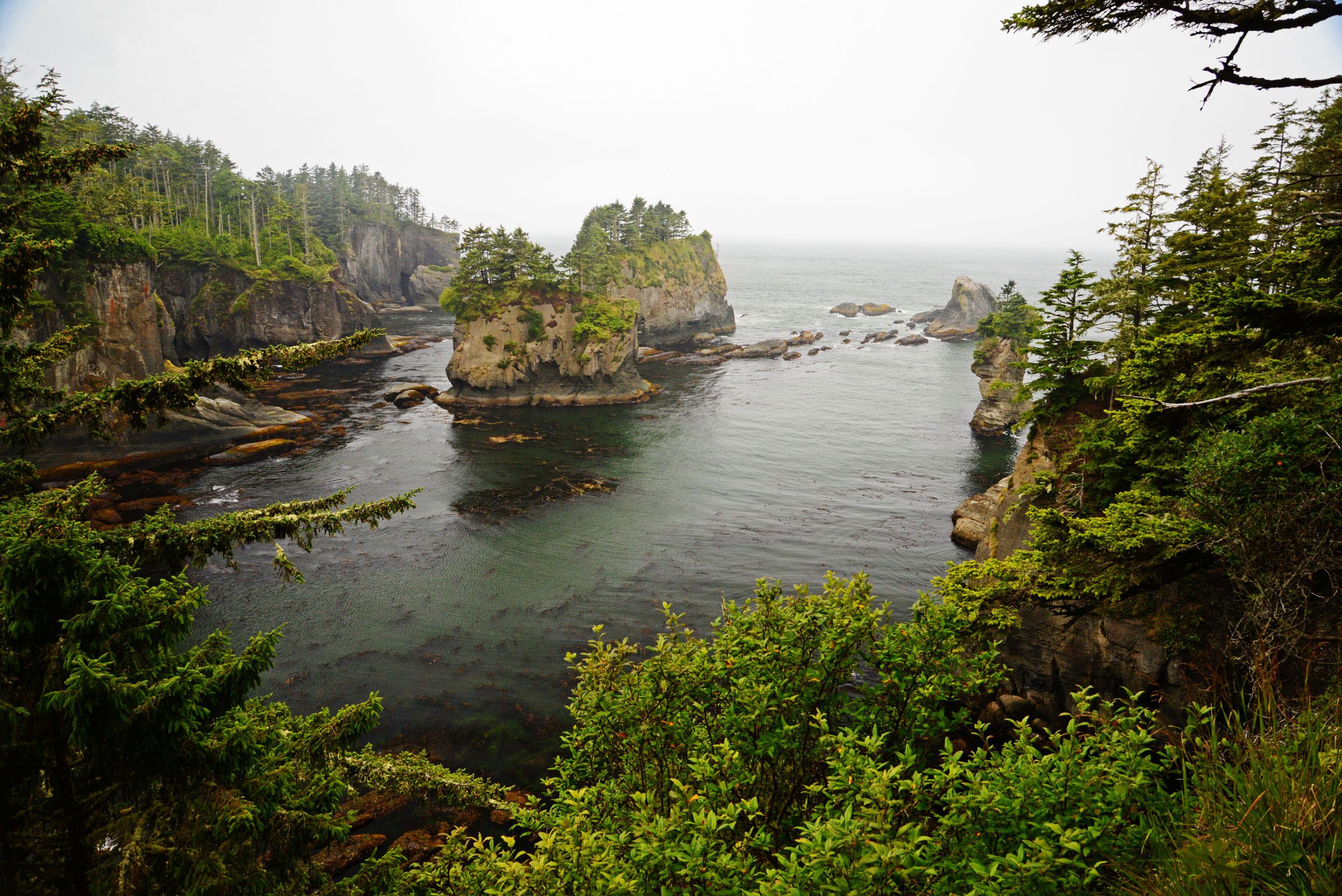Contributed by Washington Department of Fish & Wildlife
Oil can harm or kill fish and wildlife no matter where it is located in the water. Floating oils impact habitats and animals at the water surface. Non-floating oils impact habitats and species in the water column and the sea floor and there is currently no means of capturing and rehabilitating the animals in these areas. In addition, many of the tools used for removing sunken oil can also impact these organisms.
The water column and sea floor support a variety of animals. Benthic organisms are those animals that live on the sea floor. Crab, shrimp, clams, and sea stars are examples of benthic organisms. The world’s largest octopus, sea star, moon snail, and burrowing clam (geoduck) are some of the unique benthic animals that reside in Washington’s marine waters. Benthic animals are at risk of being smothered or entombed by pools of sunken oil. They can also be harmed by ingesting or absorbing toxic compounds from the oil. In addition, developing fish eggs are also particularly sensitive to the effects of oil contamination in the environment. Other animals in the food web that eat benthic organisms can consume toxins when they eat contaminated prey.
Sinking oils also come into contact with fish and wildlife as the oil sinks through the water column. Diving birds, marine mammals, salmon, and other animals that spend time in the marine water column can become oiled or ingest oil while the oil is in the water column.
Eelgrass meadows and kelp forests are some of the aquatic vegetation communities that provide important habitat for a variety of animals including seabirds, fish, and sea otters. Sunken oil has the potential to kill aquatic vegetation. If this happens, it can disrupt ecosystems that rely on these plants from the sea floor up to the water’s surface.
The sea floor types in Washington’s marine waters can generally be categorized as: soft sediments, rock reefs, boulder and cobble fields, or non-hard rock walls. Each of these is composed of different materials and support a different assemblage of organisms.
Soft sediment includes clays, mud, sand and gravel. Animals that tend to live on the surface in these habitats can include sea cucumbers, sea stars, crustaceans such as crab and shrimp, and bottom fish such as skate, cod, and the flat fishes.
Soft sediment habitats also support shellfish and other invertebrates including bivalves, worms, brittle stars, and shrimplike crustaceans whose burrowing or foraging activities can penetrate up to one meter below the subsurface bottom. In deeper waters, this habitat type may also include sand fields that serve as necessary overwintering habitat for sand lance, and environmentally critical forage fish.
 |
 |
Rock reefs serve as important habitat for a wide range of species including mobile invertebrates (e.g. snails, sea slugs, sea cucumbers, sea stars, etc.) and immobile species (e.g. anemones, barnacles, shellfish, sponges, tubeworms, etc.). Macro algae like nori, bladderwrack, and Turkish towel are found in this habitat as are the larger kelps such as bull, giant, and sugar. These various “sea weeds” provide important food and shelter for many organisms. The crevices and overhangs associated with reefs serve as valuable habitat for a wide variety of other species such as crabs, shrimp, octopus, wolf eel, rockfish, and lingcod. If located within their capabilities to dive, these areas may also serve as important foraging areas for birds and marine mammals.
Many marine organisms may live on or between the cobble stones and predatory species often utilize these habitats as foraging areas. As with the rocky reefs, these habitats serve as important foraging areas for birds and marine mammals if they are located within a species ability to dive. Depending on how much sediment the currents move through the area the spaces between the rocks may be filled with sediment that can also support bottom dwelling life forms.Boulder and cobble fields provide many of the same ecological functions described for rock reefs while the spaces between boulders offer enhanced spaces for refuge of benthic invertebrates and fish.
Non-hard rock walls are the result of the glacial origin of the Puget Sound basin. There are numerous areas of steep consolidated glacial deposits, particularly in the vicinity of the Tacoma Narrows and Colvos Passage. These structures function much like rock reefs but have a more penetrable surface as animal activity and erosion create temporary pockets in the surface. The biota of these habitats is similar to that of rock reefs except that long-lived, immobile life forms (such as sea anemones) may be less abundant due to the sloughing of the wall surface.






